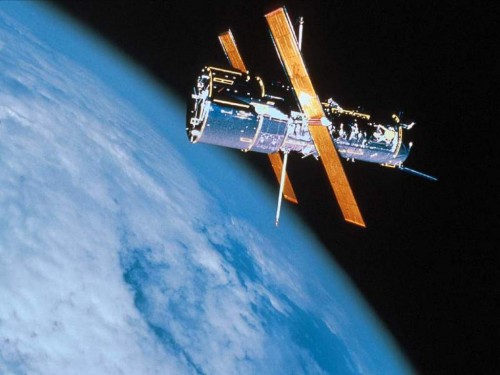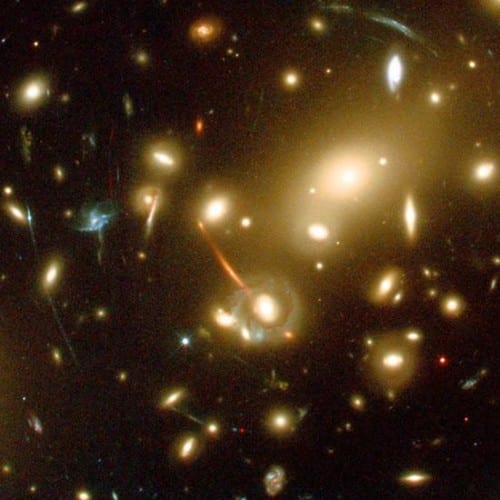You must have heard about the Hubble and Spitzer space telescopes, which orbit the earth and take pictures of various celestial bodies and in this way provide important information for research. Why is it necessary to send the cameras into space? Why can't we take pictures from Earth? * Things you see from there

Author: Dr. Netzah Parbiash, a young Galileo
You must have heard about the Hubble and Spitzer space telescopes, which orbit the earth and take pictures of various celestial bodies and in this way provide important information for research. Why is it necessary to send the cameras into space? Why can't we take pictures from Earth?
The answer lies in the earth's atmospheric layer, which filters out different wavelengths. What is that "filter" and how is it related to the greenhouse effect, these questions occupy us a lot.
What is the atmosphere?
Atmosphere is the layer of gases that surrounds the Earth (or any other celestial body that has a large enough mass to hold the gases). The Earth's atmosphere is made of a mixture of gases that we call air. The gases are attracted to the Earth because of its gravity, and even though there are atmospheric gases that escape into space, the Earth is massive enough to hold a permanent layer of them (on Mars, for example, the atmosphere is very thin, and on the Moon it does not exist at all).
Because of gravity, the thickest part of the atmosphere is near the ground, and the higher you go, the thinner it becomes. At a height of several hundred kilometers above the surface, the atmosphere merges into empty space. Dry air is composed of 78 percent nitrogen and 21 percent oxygen, which is 99 percent of the atmosphere, and the other percent includes carbon dioxide and noble gases such as argon, helium and neon. In the atmosphere, different layers are distinguished, which are divided according to their density and physical properties. We are interested in the ability of the atmosphere to react with electromagnetic waves at different frequencies.
The spectrum of electromagnetic radiation
Although the spectrum of electromagnetic radiation is continuous, it is divided into several main areas, depending on the wavelength. As the wavelength of electromagnetic radiation is longer, its frequency is lower and it is less energetic. The main areas of the electromagnetic radiation spectrum are:
- - Radio waves: have a wavelength of meters to kilometers. Radio waves are mainly used for voice communication in radio broadcasts and wireless phones.
- Microwaves: have a wavelength of several centimeters. In microwave ovens, microwaves are used due to the reaction they create in the water molecules in the food.
- Infrared radiation: has a wavelength of micrometers (micrometer - millionth of a meter). The bodies of various animals as well as humans radiate in this area (therefore it is possible to use components sensitive to infrared radiation in night vision devices).
- Visible light: has a wavelength of hundreds of nanometers (nanometer - billionth of a meter). This region of the spectrum contains wavelengths of different colors, which we are able to see.
- Ultraviolet radiation: has a wavelength of tens of units of nanometers. The earth's ozone layer blocks most of the ultraviolet radiation that comes from the sun, but this radiation is so energetic that even the little that penetrates can cause damage to the skin and eyes with multiple exposure to sunlight (which is why we are warned about the dangers of solar radiation).
- X-ray radiation: has a wavelength of a few angstroms (an angstrom is a tenth of a nanometer). This radiation has many uses in medicine and technology, thanks to its ability to work through materials that visible light is unable to penetrate, such as soft tissues of the human body.
- Gamma radiation: has the shortest wavelength, of hundreds of angstroms, and is therefore also the most energetic. This radiation is considered extremely dangerous, and usually originates from radioactive phenomena (for example, a nuclear explosion). Used for sterilization.

And how does all this relate to astronomical photography?
Different parts of the atmosphere react with different wavelengths. As mentioned, the ozone reacts with the ultraviolet radiation and absorbs it. From the human point of view this is a particularly important feature, because as mentioned this radiation is dangerous for us. Therefore, if we want to photograph celestial bodies in this field of radiation, we will have to go outside the atmosphere, into space. For this purpose, telescopes are sent into space - they allow photography in wavelengths that do not reach the earth.
Similarly, the infrared radiation also fails to penetrate through the atmospheric layer. In fact, the Earth itself emits infrared radiation into space. Fortunately, the atmosphere prevents most of this radiation from escaping and serves as a sort of blanket for the Earth. This is the greenhouse effect. However, if we want to photograph celestial bodies in this area, we will discover again that this is not possible from Earth and we must go into outer space.
You ask, why would we want to photograph at these wavelengths? Well, it turns out that important physical processes are associated with the emission of radiation in this area, and hence important information is hidden in them. That is why telescopes must be sent into space, so that they can transfer the photographs from there. See, for example, the Scorpion Nebula: each of the photographs is of the exact same star! However, photography at different wavelengths provides a completely different picture, from which one can learn about the physics of the sky gram.
> The writer is a scientific vice president at Caruso Science Park
* The article was published in the December 2014 issue of Young Galileo
Want to read more? To receive a young Galileo magazine as a gift
